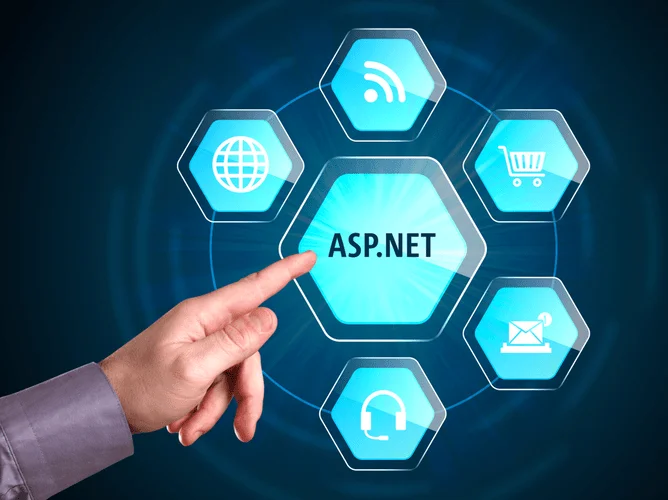Artificial intelligence is rapidly turning into its highly effective companion, enhancing diagnostic accuracy, streamlining workflows, and personalizing care plans. AI-driven data and clinicians now work together to offer patients with more complete interactions. As the popularity of telemedicine has elevated, there was an rising focus on AI-assisted mental well being assessments, monitoring and wellness indicators. As we embark on this journey, let us harness the potential of AI in telemedicine to elevate the usual of healthcare and create a brighter future for all.

The potential of AI to boost the capabilities of tele-ICU is considerable, as it can present real-time analysis of patient data and help in scientific decision-making. AI packages may be trained to establish patterns within the data of the affected person and supply alerts when a patient’s situation deviates from anticipated norms. In addition to real-time monitoring, AI can additionally be used to foretell patient outcomes and help with resource allocation. For instance, AI algorithms can predict which patients are at the highest risk of growing sepsis or other problems, permitting clinicians to prioritize their care. AI can even assist in predicting the need for mechanical ventilation or other interventions, allowing for extra environment friendly use of assets. Telemedicine is a healthcare method and never a software; it can be carried out by way of different modalities, similar to live video consultations or store-and-forward messaging systems.
Looking at the evolution of the healthcare industry, know-how has at all times helped healthcare providers in offering higher care. AI can streamline numerous elements of telemedicine and give healthcare suppliers crucial data-driven insights into a person’s health. However, its integration with telehealth techniques may be troublesome for healthcare providers to adapt and use correctly. Virtual health assistants, one other implementation of AI and machine learning, are exhibiting a fantastic influence on lowering administrative burdens.
Ai In Medication: Exploring Ai’s Emerging Function In Affected Person Care Administration
However, essentially the most vital telehealth use case with AI-powered chatbots is offering fundamental healthcare assist. These technologies reduce the patient’s in-person visits to the clinic and encourage self-care. The use of AI in telecardiology is rapidly increasing, as it has the flexibility to rapidly and accurately analyze substantial amounts of knowledge. For instance, AI algorithms may be employed to look at electrocardiograms (ECGs) and different cardiac imaging checks, identifying patterns and anomalies that will show difficult for human clinicians to discern. This may help with the early diagnosis and treatment of coronary heart illness, leading to improved results for patients. Many of the computer applied sciences and digital tools used by clinicians and patients have built-in AI capabilities, making AI commonplace in healthcare settings and health-related interactions.

From diagnostic assist to predictive analytics and remote affected person monitoring, it enhances the capabilities of healthcare professionals and facilitates extra correct and well timed selections. Moreover, AI-driven chatbots and digital assistants have improved the affected person expertise by offering immediate data and help, lowering the burden on healthcare workers. Computer vision is a transformative know-how in telemedicine, employed to research and interpret medical photographs and visual data. This know-how, powered by deep learning and Convolutional Neural Networks (CNNs), is instrumental in accurately and effectively interpreting a broad range of medical photographs, including X-rays, CT scans, MRIs, and histopathological slides.
Telepsychiatry And The Role Of Ai
In comparison, dermatologists had a lower average sensitivity of ninety.6% and specificity of 71%. It means that when built-in with cellular devices, the CNN presents the potential to extend the attain of professional healthcare to rural areas, offering common access to essential diagnostic care. The integration of HIPAA-compliant AI into telehealth systems is rapidly evolving, providing the potential to considerably enhance healthcare delivery, affected person outcomes, and access to care. With ongoing advancements in AI know-how, the healthcare industry can anticipate more correct diagnoses, faster drug improvement, and improved affected person outcomes.

High finish investigations, on the other hand, require rather more distant infrastructure making it expensive and lowering the cost profit benefit of telecare. We contemplate the significance, current, and possible future uses of AI, after which define the potential alternatives for addressing some of the system level challenges in implementation. We start by discussing the overall function of AI in telehealth after which we provide some specific situations whereby AI can enhance well being outcomes and improve stakeholder expertise and acceptance. By leveraging AI applied sciences, telehealth platforms can provide extra customized, efficient, and accessible healthcare companies to sufferers across the globe. As technology advances, we are able to count on even more revolutionary makes use of of AI in telehealth, additional revolutionizing the healthcare industry. AI-powered platforms can analyze patient information sooner, analyze advanced symptoms with near-human precision, and probably predict illness threat earlier than signs seem.
Developing a profitable AI-powered telehealth model will require information preparation and data integration within the system. The information ought to be rigorously gathered, cleansed, and annotated to satisfy the telemedicine requirements. Inclusion of AI in telemedicine applications can automate the appointment reserving for healthcare practitioners, making the system rather more effective.
Geriatric issues corresponding to cardiovascular atherosclerosis, osteoporosis disease, diabetes, dementia, osteoarthritis, and weight problems need prompt prognosis and ongoing remedy from a educated caregiver. You can successfully integrate AI into your telemedicine platform by following these steps and prioritizing knowledge security, user adoption, and continuous enchancment. This means, telemedicine rises from the ashes like a phoenix to be at hand in this trying time. AI accelerates drug discovery and growth by analyzing vast chemical databases and predicting drug-protein interactions. In this weblog, we will discuss the applications of AI in telemedicine, its use instances, and its implementation. It begins by amassing basic information like demographics and threat components, adopted by inquiries concerning the patient’s main symptoms, overlaying a wide age vary from newborns to adults.
Well-liked Machine Learning Frameworks To Make Use Of In Python
This mixture of advanced know-how and medical practice has the potential to redefine the way healthcare is delivered, making it extra accessible, efficient, and patient-centric. While its integration is embraced, ensuring ethical concerns and privateness can further take us towards a more accessible and related healthcare landscape. Being a widespread trade, coaching, and education for healthcare providers might be a challenge.
It is crucial to ensure that AI is used as a software to support and augment medical decision-making, somewhat than replacing it entirely. Additionally, there is a danger of bias in the AI algorithms, which might lead to disparities in look after https://www.globalcloudteam.com/telemedicine-technology-meets-healthcare/ sure affected person populations. To tackle these issues, it’s crucial to contain a diverse group of specialists within the improvement and implementation of AI algorithms and to often consider the algorithms for accuracy, bias, and transparency.
Telemedicine has emerged as a revolutionary solution to enhance access to healthcare for underserved communities and remote areas. Artificial Intelligence (AI) adds a model new dimension to this quickly rising subject by enhancing remote patient monitoring, consultation, prognosis, and workflow optimization [1]. This article explores the function of AI in telemedicine and the potential to bridge healthcare gaps across the globe. Apart from these above deterioration-oriented approaches, administration of recovery conditions provide another affected person monitoring alternative for telehealth. For example, software to measure wound measurement 31

The integration of AI in telemedicine could make healthcare more effective, simply accessible, and patient-centric. Due to the persevering with public well being concern, the emphasis on AI and telehealth stays a big push for healthcare executives looking to stay competitive by enhancing physician processes and uncovering predictive potential via patient knowledge evaluation. Remote patient monitoring (RPM) is steadily becoming one of the effective techniques for managing continual illnesses.
Distant Monitoring And Continual Disease Administration
AI-driven tools also play a significant role in sending automated medicine reminders, guaranteeing sufferers stick to their prescribed schedules. Moreover, these techniques facilitate real-time communication between healthcare providers and patients, allowing for prompt changes to therapy plans as wanted. By integrating AI into telemedicine platforms, medication administration becomes extra efficient, enhancing patient outcomes and providing remote healthcare professionals with valuable insights into affected person adherence and response to drugs.
- This can be especially helpful for sufferers that suffer from chronic coronary heart situations and necessitate steady monitoring to manage their condition.
- An instance of synthetic intelligence’s influence on medical training is the combination of AR/VR in healthcare, significantly virtual simulations.
- While experiencing this phenomenon, the healthcare business has seen both advantages and disadvantages.
- The use of AI in telecardiology is quickly increasing, because it has the flexibility to quickly and accurately analyze substantial amounts of data.
- Furthermore, AI language translation tools play a pivotal function in breaking down language limitations, making certain efficient communication between patients and healthcare suppliers, irrespective of their main language.
- This article provides you an insight into how Web3 for healthcare is proving efficient solutions in solving numerous security and other issues in well being.
It’s the process of delivering health care companies at a distance through the use of communication and data applied sciences to diagnose, assess, and treat sufferers. Through improved accessibility, correct diagnoses, and personalised care, AI-powered telemedicine is paving the greatest way for a healthier and extra linked world. AI and telehealth can considerably reduce the burden of medical staff with chatbots and virtual health assistants. These technologies can automate routine tasks and allow healthcare professionals to concentrate on complex circumstances.
This places professionals under plenty of stress, and it often causes life-saving patient diagnoses to be delayed. For many, synthetic intelligence (AI) has quietly integrated into our every day lives, permeating workplaces, properties, automobiles, smartphones, and laptops. It’s deeply woven into the material of our existence, understanding our entertainment preferences, musical tastes, and even our perfect partners. “One of the biggest challenges in a clinical setting … is that AI tends to be perceived as a black box and different people don’t trust black bins. We’re overcoming that, nevertheless it’s still a barrier,” Bogdan stated.
One of the primary benefits of the implementation of AI in telemedicine is its capability to democratize healthcare by overcoming geographical barriers. Here, AI algorithms analyze information from blood stress cuffs, coronary heart screens, and other wearable devices to keep track of any abnormalities. For occasion, wearable gadgets built-in with sensors collect real-time information on important indicators, providing professionals a comprehensive view of a patient’s health. Building enterprise AI solutions for insurance provides quite a few benefits, transforming numerous aspects of operations and enhancing general efficiency, effectiveness, and buyer experience.
Treatment Administration
Furthermore, DL extends to Natural Language Processing (NLP), extracting insights from unstructured medical text data via fashions like Recurrent Neural Networks and Long Short-Term Memory Networks. These facilitate the interpretation of medical records and clinical notes, contributing to informed decision-making. DL’s predictive analytics capability, often using Deep Neural Networks (DNNs), aids in danger evaluation and consequence predictions, enhancing the management of chronic ailments and reducing hospital readmissions.
Before the model’s implementation, the fashions should be examined, and the healthcare suppliers should be trained and educated on the means to use and rely on them. Machine learning and AI have turn into sturdy tools for tackling difficult points in quite a lot of disciplines lately. Machine learning aided prognosis, in particular, has the potential to transform healthcare by using giant amounts of affected person knowledge to provide exact and customized diagnoses. Certain key social and moral considerations additionally have to be taken into account as AI-enabled telehealth becomes extra commonplace. Unlike people, AI methods never lack motivation or drive, but with out feelings there’s an lack of ability to evaluate moral good or unhealthy, with little understanding of the results.

